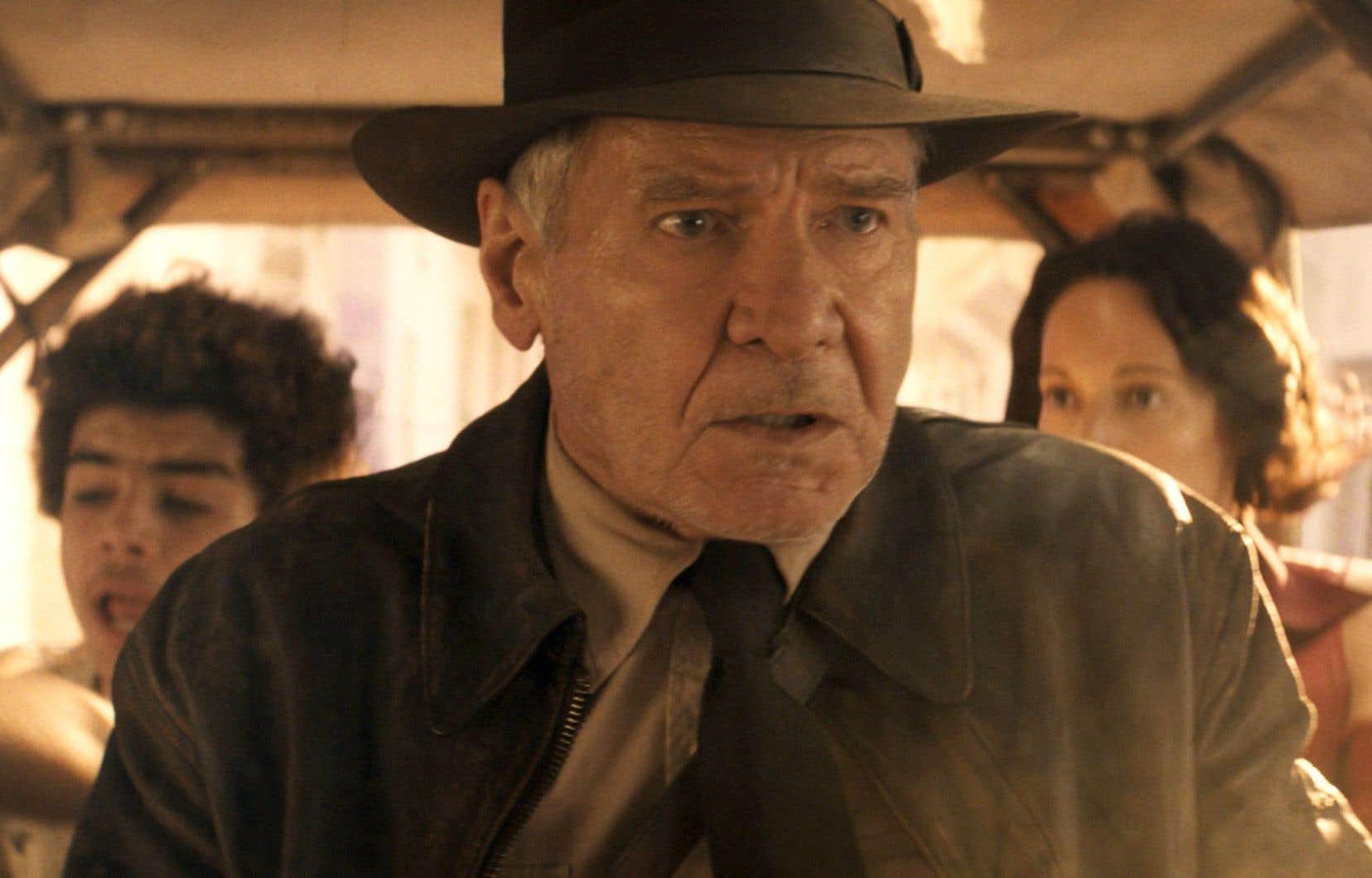Released in 1981, Raiders of the Lost Ark (The Raiders of the Lost Ark) remains one of the most influential blockbusters around. Hectic action, exotic adventure, romance just right, good-natured humor, cutting-edge special effects: it was all there, perfectly balanced. Since then, we often try, in different narrative contexts, to reproduce this winning recipe, sometimes successfully, generally in vain. Fifth film of the long-term saga, Indiana Jones and the Dial of Destiny (Indiana Jones and the Dial of Destiny) falls for its part in an in-between. Harrison Ford is back there, very fit, but the absence for the first time of Steven Spielberg behind the camera is felt.
In theory, all the elements are there for an exciting final chapter, and it is at times. The film also begins at top speed, or rather at full speed, in 1944, with a duel between Indiana Jones (Ford, rejuvenated thanks to the magic of digital technology) and a Nazi, Jurgën Voller (Mads Mikkelsen, monotonous to have too many bad guys), on a train convoy. The challenge: a mysterious device once designed by Archimedes.
After this prologue, we are transported 25 years later, in 1969. In his small New York apartment, Indie contemplates, a coffee washed down with whiskey in hand, a retirement and a divorce which he does not want. Clearly, the septuagenarian is ripe for one last adventure.
Arriving at the right time, her goddaughter Helena (fabulous Phoebe Waller-Bridge, creator and star of the series flea bag) leads him on a quest for the missing half of the famous device. Here is the grumpy old man and the young woman with the formidable repartee launched from the wide world.
For his part, Voller was drafted into the US government, like many former Nazi scientists, to work on NASA’s space program. However, Voller has not given up on getting his hands on the device. And for good reason: this kind of dial once broken in two would allow you to go back in time. Voller being obviously a megalomaniac, a race against time begins.
The rest is made of pursuits, various perils avoided in extremis, false leads, changes of allegiance, without forgetting this object with a magical aura, etc. In short: everything one expects from a film starring Indiana Jones.
On the side of excess
The problem is that we feel the mechanics and the cogs creak, much more than in the previous one. Indiana Jones and the Kingdom of the Crystal Skull (Indiana Jones and the Kingdom of the Crystal Skull). The story was written by four screenwriters, and the result is an assembly. In Raiders of the Lost Arkin particular, but also in Indiana Jones and the Last Crusade (Indiana Jones and the Last Crusade), and, to a lesser extent, in Indiana Jones and the Temple of Doom (Indiana Jones and the Temple of Doomwhich has aged badly in many ways), there was a real narrative fluidity at work.
Here, we tick boxes, wink and pay tribute. We want to do it “in the style of” Spielberg, but while pulling the film on the side of the characteristic excess of the now most popular blockbusters from Marvel.
Thus the talented but impersonal James Mangold, behind walk the line, Wolverine And Loganhe tries to recreate without quite succeeding this wonder imbued with nostalgia specific to the originals, while succumbing to an escalation of visual effects which makes several passages artificial.
Speaking of special effects: Harrison Ford’s digital rejuvenation during the prologue is stunning. On the other hand, the rest of the computer-generated imagery proves to be of uneven quality. The film is often devoid of tangibility. It’s disembodied. Admittedly dated, the miniatures and other trompe-l’oeil of the first three films had a physical dimension.
eternal return
The outcome, in addition to dragging on, like this tuk-tuk chase in Tangier, pushes the fantastic cork too far – even after the aliens of the previous opus.
As is, Indiana Jones and the Dial of Destiny is of its time, to stay within the theme of the film: it’s entertaining, but forgettable. Unlike the original film.
Perhaps, after all, the hour of retirement has come. Especially since it should be mentioned that, after this laborious third act, the very last scene turns out to be a perfect end point. And again, it is only because the memory of Raiders of the Lost Ark. This is called an eternal return.
